-
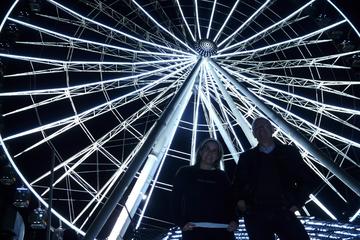 Estrella de Puebla
Estrella de Puebla Opened in 2013, Puebla’s latest tourist attraction is an 80-meter-tall observation wheel, the Estrella de Puebla, or ‘Puebla Star’, which now ranks as the largest in South America and features in the Guinness World Record Book as the world’s largest transportable observation whe
Estrella de Puebla
Estrella de Puebla Opened in 2013, Puebla’s latest tourist attraction is an 80-meter-tall observation wheel, the Estrella de Puebla, or ‘Puebla Star’, which now ranks as the largest in South America and features in the Guinness World Record Book as the world’s largest transportable observation whe
-
 Africam Safari
Africam Safari With more than 2,500 animals and over 300 species, the Africam Safari makes for a thrilling day out and it’s earned a reputation as one of Mexico’s leading zoos. The majority of animals are free roaming within the park, and visitors can either drive through the safari trail or take
Africam Safari
Africam Safari With more than 2,500 animals and over 300 species, the Africam Safari makes for a thrilling day out and it’s earned a reputation as one of Mexico’s leading zoos. The majority of animals are free roaming within the park, and visitors can either drive through the safari trail or take
-
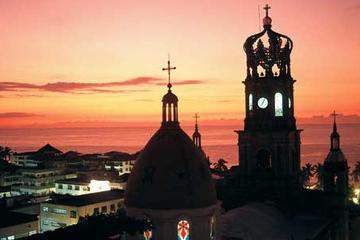 The Church of Our Lady of Guadalupe
The Church of Our Lady of Guadalupe Puerto Vallarta’s Church of Our Lady of Guadalupe was built over the course of several decades in the first half of the 20th century.Built in rustic pink stone, to a neo-baroque design, one of the prettiest details is the crown that tops the church bell tower.Th
The Church of Our Lady of Guadalupe
The Church of Our Lady of Guadalupe Puerto Vallarta’s Church of Our Lady of Guadalupe was built over the course of several decades in the first half of the 20th century.Built in rustic pink stone, to a neo-baroque design, one of the prettiest details is the crown that tops the church bell tower.Th
-
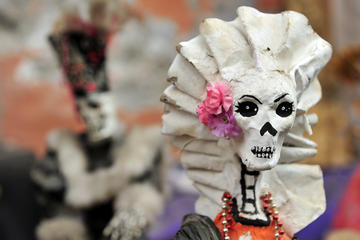 Sonora Market
Sonora Market Located just south of La Merced Market, the Sonora Market was established to rival the La Merced Market for handicrafts instead of foodstuffs. Here, in the Sonora Market, you’ll find all kinds of handmade goods – perfect for specialty goods like pottery, herbal medicine, religious it
Sonora Market
Sonora Market Located just south of La Merced Market, the Sonora Market was established to rival the La Merced Market for handicrafts instead of foodstuffs. Here, in the Sonora Market, you’ll find all kinds of handmade goods – perfect for specialty goods like pottery, herbal medicine, religious it
-
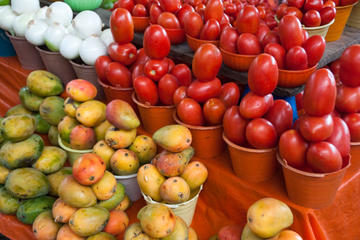 San Juan Market
San Juan Market One of the oldest markets in the city, the San Juan Market (Ernesto Pugibet Market) was established in colonial times and is over 150 years old. One of the most popular places to shop in the city, the market had simple roots, once beginning as people put things out upon blankets on
San Juan Market
San Juan Market One of the oldest markets in the city, the San Juan Market (Ernesto Pugibet Market) was established in colonial times and is over 150 years old. One of the most popular places to shop in the city, the market had simple roots, once beginning as people put things out upon blankets on
-
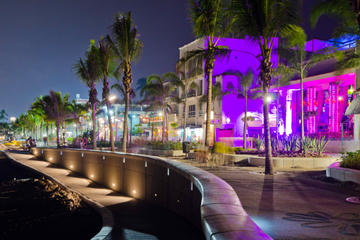 Marina Vallarta
Marina Vallarta One of the major attractions in Puerto Vallarta, Marina Vallarta is a self-contained stretch of boardwalk, white sand and retail outlets that has become so well-known for its beauty and success that it was a model for its sister cities of Cabo, Mazatlan, Ixtapa and Cancun. Easily i
Marina Vallarta
Marina Vallarta One of the major attractions in Puerto Vallarta, Marina Vallarta is a self-contained stretch of boardwalk, white sand and retail outlets that has become so well-known for its beauty and success that it was a model for its sister cities of Cabo, Mazatlan, Ixtapa and Cancun. Easily i
-
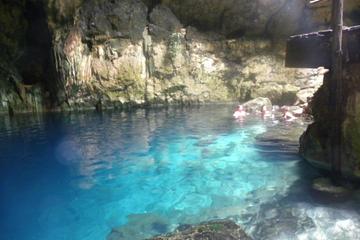 Cuzama
Cuzama The Cuzama area of the Yucatan peninsula is known for its cluster of cenotes, or underwater sinkholes, which are unique in their methods of access. The three main cenotes of Cuzama are named Chelentun, Chacsinicche, and Bolonchojol. They can be traveled to via traditional horse-drawn cart.
Cuzama
Cuzama The Cuzama area of the Yucatan peninsula is known for its cluster of cenotes, or underwater sinkholes, which are unique in their methods of access. The three main cenotes of Cuzama are named Chelentun, Chacsinicche, and Bolonchojol. They can be traveled to via traditional horse-drawn cart.
-
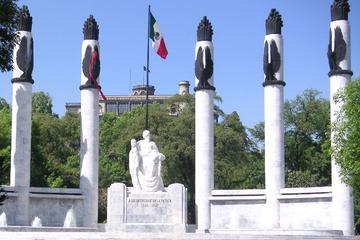 Chapultepec Park
Chapultepec Park Chapultepec Park, or Grasshopper Hill, is the largest city park in the world, an awesome expanse of greenery marbled with walking paths that meander between quiet ponds, monumental buildings, and a world-class collection of museums. Visitors could enjoy a quiet afternoon in its em
Chapultepec Park
Chapultepec Park Chapultepec Park, or Grasshopper Hill, is the largest city park in the world, an awesome expanse of greenery marbled with walking paths that meander between quiet ponds, monumental buildings, and a world-class collection of museums. Visitors could enjoy a quiet afternoon in its em
-
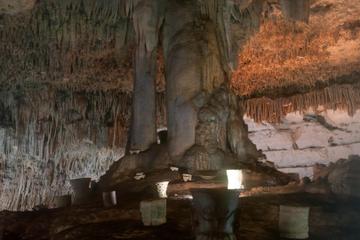 Balankanche Caves
Balankanche Caves Balankanche Caves are some of the most famous Mayan cave sites in the world, not far from Chichen Itza. An underground network of dry tunnels called ‘grutas,’ they are similar to the cenotes but without water. The many caverns are filled with interesting rock formations, includin
Balankanche Caves
Balankanche Caves Balankanche Caves are some of the most famous Mayan cave sites in the world, not far from Chichen Itza. An underground network of dry tunnels called ‘grutas,’ they are similar to the cenotes but without water. The many caverns are filled with interesting rock formations, includin
-
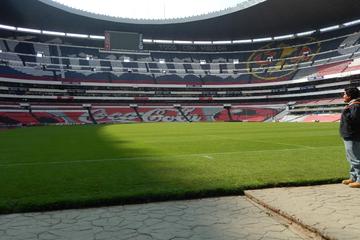 Azteca Stadium
Azteca Stadium One of the largest stadiums in the world and home to the professional football club America, the Azteca Stadium (Estadio Azteca) is a soccer (fútbol) stadium and is the official stadium of Club America and Mexican national football team. Located in the Santa Ursula neighborhood of M
Azteca Stadium
Azteca Stadium One of the largest stadiums in the world and home to the professional football club America, the Azteca Stadium (Estadio Azteca) is a soccer (fútbol) stadium and is the official stadium of Club America and Mexican national football team. Located in the Santa Ursula neighborhood of M
-
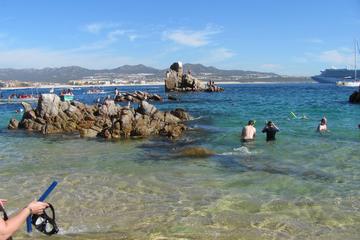 Pelican Rock
Pelican Rock Even though this spot is named for the pelicans that clumsily land on the rocks, it’s the animals and action beneath the water that warrant all the attention. Here, at this protected swimming spot by “Lover’s Beach” and the famous rocks of “El Arco,” snorkelers, swimmers, scuba divers
Pelican Rock
Pelican Rock Even though this spot is named for the pelicans that clumsily land on the rocks, it’s the animals and action beneath the water that warrant all the attention. Here, at this protected swimming spot by “Lover’s Beach” and the famous rocks of “El Arco,” snorkelers, swimmers, scuba divers
-
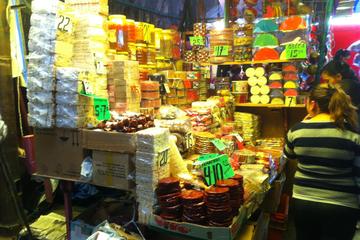 La Merced Market
La Merced Market One of Mexico City’s main tourist draws are the markets that you’ll find here. Everything from farmer’s markets selling local produce to craft markets where local artisans bring their skilled handiwork – the markets of Mexico City are legendary. And La Merced Market is the king of
La Merced Market
La Merced Market One of Mexico City’s main tourist draws are the markets that you’ll find here. Everything from farmer’s markets selling local produce to craft markets where local artisans bring their skilled handiwork – the markets of Mexico City are legendary. And La Merced Market is the king of
-
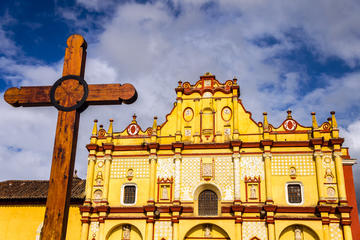 San Cristobal de las Casas
San Cristobal de las Casas The self-proclaimed capital of highland Chiapas, San Cristobal de las Casas, or “Jovel” as it’s known to locals, is often chosen as a base for visitors exploring the nearby sights of Palenque, Bonampak and the Sumidero canyon. A beautifully preserved colonial town, San
San Cristobal de las Casas
San Cristobal de las Casas The self-proclaimed capital of highland Chiapas, San Cristobal de las Casas, or “Jovel” as it’s known to locals, is often chosen as a base for visitors exploring the nearby sights of Palenque, Bonampak and the Sumidero canyon. A beautifully preserved colonial town, San
-
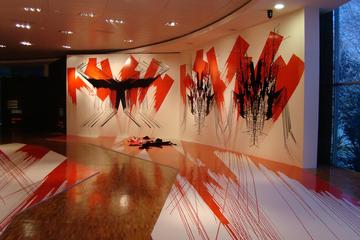 Museum of Modern Art
Museum of Modern Art A treasure of Mexico City, the Museum of Modern Art sits in Chapultepec Park. Known for housing great examples of 20th-century art and photography, as well as exhibits that blend ancient and modern traditions, the museum is impressive by any standard. Just walking up to the fr
Museum of Modern Art
Museum of Modern Art A treasure of Mexico City, the Museum of Modern Art sits in Chapultepec Park. Known for housing great examples of 20th-century art and photography, as well as exhibits that blend ancient and modern traditions, the museum is impressive by any standard. Just walking up to the fr
-
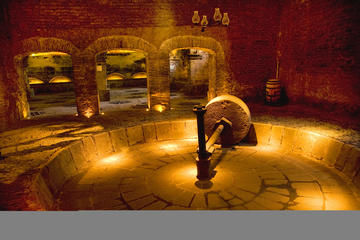 Casa Herradura Distillery
Casa Herradura Distillery With a history dating back to 1870 and a reputation for producing some of Mexico’s finest tequilas, the Casa Herradura Distillery is among the most famous of Jalisco’s many tequila distilleries. A family-run hacienda located at the center of tequila country, Casa Herradur
Casa Herradura Distillery
Casa Herradura Distillery With a history dating back to 1870 and a reputation for producing some of Mexico’s finest tequilas, the Casa Herradura Distillery is among the most famous of Jalisco’s many tequila distilleries. A family-run hacienda located at the center of tequila country, Casa Herradur
-
 Tequila Express
Tequila Express Riding the Tequila Express is one of the most atmospheric ways to take in the highlights of Mexico’s tequila country, chugging through the sweeping valleys between Guadalajara and Amatitan. Hop on board the historic railway and take in the UNESCO-listed landscapes of Jalisco, the c
Tequila Express
Tequila Express Riding the Tequila Express is one of the most atmospheric ways to take in the highlights of Mexico’s tequila country, chugging through the sweeping valleys between Guadalajara and Amatitan. Hop on board the historic railway and take in the UNESCO-listed landscapes of Jalisco, the c
-
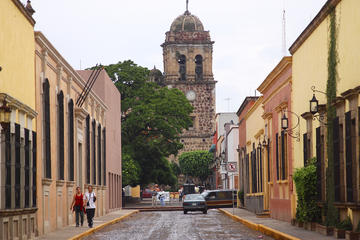 Tequila
Tequila A dusty town tucked in the volcanic valleys northwest of Guadalajara and surrounded by the UNESCO-listed blue agave plantations, Tequila’s rich history is about more than just a name. As the birthplace of the eponymous drink, Tequila has been producing Mexico’s national beverage since the
Tequila
Tequila A dusty town tucked in the volcanic valleys northwest of Guadalajara and surrounded by the UNESCO-listed blue agave plantations, Tequila’s rich history is about more than just a name. As the birthplace of the eponymous drink, Tequila has been producing Mexico’s national beverage since the
-
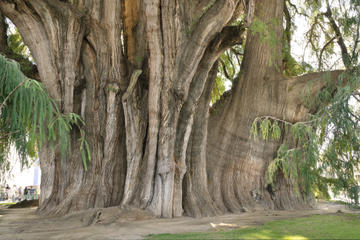 Arbol de Tule
Arbol de Tule A tree so fat it seems to strain against the confines of the surrounding square, the Árbol del Tule is at least 2000 years old, which makes it one of the world’s oldest living entities. El Tule is a Montezuma bald cypress (Taxodium mucrunatum), a tree the Aztecs cultivated as an orna
Arbol de Tule
Arbol de Tule A tree so fat it seems to strain against the confines of the surrounding square, the Árbol del Tule is at least 2000 years old, which makes it one of the world’s oldest living entities. El Tule is a Montezuma bald cypress (Taxodium mucrunatum), a tree the Aztecs cultivated as an orna
-
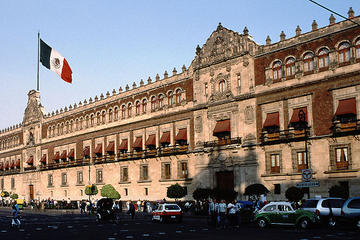 National Palace (Palacio Nacional)
National Palace (Palacio Nacional) The seat of Mexicos federal government since the age of the Aztecs (at least), the National Palace - or Palacio Nacional - is a working building, and many offices are off limits to visitors. You can, however, pass through the enormous baroque facade dominating th
National Palace (Palacio Nacional)
National Palace (Palacio Nacional) The seat of Mexicos federal government since the age of the Aztecs (at least), the National Palace - or Palacio Nacional - is a working building, and many offices are off limits to visitors. You can, however, pass through the enormous baroque facade dominating th
-
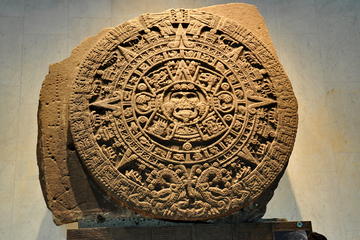 National Museum of Anthropology (Museo Nacional de Antropologia)
National Museum of Anthropology (Museo Nacional de Antropologia) It’s easy to spend an entire day exploring the nearly 20 acres that make up Mexico City’s most-visited museum. Opened in 1964, the National Museum of Anthropology houses the largest collection of traditional Mexican art in the world—
National Museum of Anthropology (Museo Nacional de Antropologia)
National Museum of Anthropology (Museo Nacional de Antropologia) It’s easy to spend an entire day exploring the nearly 20 acres that make up Mexico City’s most-visited museum. Opened in 1964, the National Museum of Anthropology houses the largest collection of traditional Mexican art in the world—
Total
1639 -travel
FirstPage PreviousPage NextPage LastPage CurrentPage:
8/82 20-travel/Page GoTo Page:
 Estrella de Puebla
Estrella de Puebla Opened in 2013, Puebla’s latest tourist attraction is an 80-meter-tall observation wheel, the Estrella de Puebla, or ‘Puebla Star’, which now ranks as the largest in South America and features in the Guinness World Record Book as the world’s largest transportable observation whe
Estrella de Puebla
Estrella de Puebla Opened in 2013, Puebla’s latest tourist attraction is an 80-meter-tall observation wheel, the Estrella de Puebla, or ‘Puebla Star’, which now ranks as the largest in South America and features in the Guinness World Record Book as the world’s largest transportable observation whe
 Africam Safari
Africam Safari With more than 2,500 animals and over 300 species, the Africam Safari makes for a thrilling day out and it’s earned a reputation as one of Mexico’s leading zoos. The majority of animals are free roaming within the park, and visitors can either drive through the safari trail or take
Africam Safari
Africam Safari With more than 2,500 animals and over 300 species, the Africam Safari makes for a thrilling day out and it’s earned a reputation as one of Mexico’s leading zoos. The majority of animals are free roaming within the park, and visitors can either drive through the safari trail or take
 The Church of Our Lady of Guadalupe
The Church of Our Lady of Guadalupe Puerto Vallarta’s Church of Our Lady of Guadalupe was built over the course of several decades in the first half of the 20th century.Built in rustic pink stone, to a neo-baroque design, one of the prettiest details is the crown that tops the church bell tower.Th
The Church of Our Lady of Guadalupe
The Church of Our Lady of Guadalupe Puerto Vallarta’s Church of Our Lady of Guadalupe was built over the course of several decades in the first half of the 20th century.Built in rustic pink stone, to a neo-baroque design, one of the prettiest details is the crown that tops the church bell tower.Th
 Sonora Market
Sonora Market Located just south of La Merced Market, the Sonora Market was established to rival the La Merced Market for handicrafts instead of foodstuffs. Here, in the Sonora Market, you’ll find all kinds of handmade goods – perfect for specialty goods like pottery, herbal medicine, religious it
Sonora Market
Sonora Market Located just south of La Merced Market, the Sonora Market was established to rival the La Merced Market for handicrafts instead of foodstuffs. Here, in the Sonora Market, you’ll find all kinds of handmade goods – perfect for specialty goods like pottery, herbal medicine, religious it
 San Juan Market
San Juan Market One of the oldest markets in the city, the San Juan Market (Ernesto Pugibet Market) was established in colonial times and is over 150 years old. One of the most popular places to shop in the city, the market had simple roots, once beginning as people put things out upon blankets on
San Juan Market
San Juan Market One of the oldest markets in the city, the San Juan Market (Ernesto Pugibet Market) was established in colonial times and is over 150 years old. One of the most popular places to shop in the city, the market had simple roots, once beginning as people put things out upon blankets on
 Marina Vallarta
Marina Vallarta One of the major attractions in Puerto Vallarta, Marina Vallarta is a self-contained stretch of boardwalk, white sand and retail outlets that has become so well-known for its beauty and success that it was a model for its sister cities of Cabo, Mazatlan, Ixtapa and Cancun. Easily i
Marina Vallarta
Marina Vallarta One of the major attractions in Puerto Vallarta, Marina Vallarta is a self-contained stretch of boardwalk, white sand and retail outlets that has become so well-known for its beauty and success that it was a model for its sister cities of Cabo, Mazatlan, Ixtapa and Cancun. Easily i
 Cuzama
Cuzama The Cuzama area of the Yucatan peninsula is known for its cluster of cenotes, or underwater sinkholes, which are unique in their methods of access. The three main cenotes of Cuzama are named Chelentun, Chacsinicche, and Bolonchojol. They can be traveled to via traditional horse-drawn cart.
Cuzama
Cuzama The Cuzama area of the Yucatan peninsula is known for its cluster of cenotes, or underwater sinkholes, which are unique in their methods of access. The three main cenotes of Cuzama are named Chelentun, Chacsinicche, and Bolonchojol. They can be traveled to via traditional horse-drawn cart.
 Chapultepec Park
Chapultepec Park Chapultepec Park, or Grasshopper Hill, is the largest city park in the world, an awesome expanse of greenery marbled with walking paths that meander between quiet ponds, monumental buildings, and a world-class collection of museums. Visitors could enjoy a quiet afternoon in its em
Chapultepec Park
Chapultepec Park Chapultepec Park, or Grasshopper Hill, is the largest city park in the world, an awesome expanse of greenery marbled with walking paths that meander between quiet ponds, monumental buildings, and a world-class collection of museums. Visitors could enjoy a quiet afternoon in its em
 Balankanche Caves
Balankanche Caves Balankanche Caves are some of the most famous Mayan cave sites in the world, not far from Chichen Itza. An underground network of dry tunnels called ‘grutas,’ they are similar to the cenotes but without water. The many caverns are filled with interesting rock formations, includin
Balankanche Caves
Balankanche Caves Balankanche Caves are some of the most famous Mayan cave sites in the world, not far from Chichen Itza. An underground network of dry tunnels called ‘grutas,’ they are similar to the cenotes but without water. The many caverns are filled with interesting rock formations, includin
 Azteca Stadium
Azteca Stadium One of the largest stadiums in the world and home to the professional football club America, the Azteca Stadium (Estadio Azteca) is a soccer (fútbol) stadium and is the official stadium of Club America and Mexican national football team. Located in the Santa Ursula neighborhood of M
Azteca Stadium
Azteca Stadium One of the largest stadiums in the world and home to the professional football club America, the Azteca Stadium (Estadio Azteca) is a soccer (fútbol) stadium and is the official stadium of Club America and Mexican national football team. Located in the Santa Ursula neighborhood of M
 Pelican Rock
Pelican Rock Even though this spot is named for the pelicans that clumsily land on the rocks, it’s the animals and action beneath the water that warrant all the attention. Here, at this protected swimming spot by “Lover’s Beach” and the famous rocks of “El Arco,” snorkelers, swimmers, scuba divers
Pelican Rock
Pelican Rock Even though this spot is named for the pelicans that clumsily land on the rocks, it’s the animals and action beneath the water that warrant all the attention. Here, at this protected swimming spot by “Lover’s Beach” and the famous rocks of “El Arco,” snorkelers, swimmers, scuba divers
 La Merced Market
La Merced Market One of Mexico City’s main tourist draws are the markets that you’ll find here. Everything from farmer’s markets selling local produce to craft markets where local artisans bring their skilled handiwork – the markets of Mexico City are legendary. And La Merced Market is the king of
La Merced Market
La Merced Market One of Mexico City’s main tourist draws are the markets that you’ll find here. Everything from farmer’s markets selling local produce to craft markets where local artisans bring their skilled handiwork – the markets of Mexico City are legendary. And La Merced Market is the king of
 San Cristobal de las Casas
San Cristobal de las Casas The self-proclaimed capital of highland Chiapas, San Cristobal de las Casas, or “Jovel” as it’s known to locals, is often chosen as a base for visitors exploring the nearby sights of Palenque, Bonampak and the Sumidero canyon. A beautifully preserved colonial town, San
San Cristobal de las Casas
San Cristobal de las Casas The self-proclaimed capital of highland Chiapas, San Cristobal de las Casas, or “Jovel” as it’s known to locals, is often chosen as a base for visitors exploring the nearby sights of Palenque, Bonampak and the Sumidero canyon. A beautifully preserved colonial town, San
 Museum of Modern Art
Museum of Modern Art A treasure of Mexico City, the Museum of Modern Art sits in Chapultepec Park. Known for housing great examples of 20th-century art and photography, as well as exhibits that blend ancient and modern traditions, the museum is impressive by any standard. Just walking up to the fr
Museum of Modern Art
Museum of Modern Art A treasure of Mexico City, the Museum of Modern Art sits in Chapultepec Park. Known for housing great examples of 20th-century art and photography, as well as exhibits that blend ancient and modern traditions, the museum is impressive by any standard. Just walking up to the fr
 Casa Herradura Distillery
Casa Herradura Distillery With a history dating back to 1870 and a reputation for producing some of Mexico’s finest tequilas, the Casa Herradura Distillery is among the most famous of Jalisco’s many tequila distilleries. A family-run hacienda located at the center of tequila country, Casa Herradur
Casa Herradura Distillery
Casa Herradura Distillery With a history dating back to 1870 and a reputation for producing some of Mexico’s finest tequilas, the Casa Herradura Distillery is among the most famous of Jalisco’s many tequila distilleries. A family-run hacienda located at the center of tequila country, Casa Herradur
 Tequila Express
Tequila Express Riding the Tequila Express is one of the most atmospheric ways to take in the highlights of Mexico’s tequila country, chugging through the sweeping valleys between Guadalajara and Amatitan. Hop on board the historic railway and take in the UNESCO-listed landscapes of Jalisco, the c
Tequila Express
Tequila Express Riding the Tequila Express is one of the most atmospheric ways to take in the highlights of Mexico’s tequila country, chugging through the sweeping valleys between Guadalajara and Amatitan. Hop on board the historic railway and take in the UNESCO-listed landscapes of Jalisco, the c
 Tequila
Tequila A dusty town tucked in the volcanic valleys northwest of Guadalajara and surrounded by the UNESCO-listed blue agave plantations, Tequila’s rich history is about more than just a name. As the birthplace of the eponymous drink, Tequila has been producing Mexico’s national beverage since the
Tequila
Tequila A dusty town tucked in the volcanic valleys northwest of Guadalajara and surrounded by the UNESCO-listed blue agave plantations, Tequila’s rich history is about more than just a name. As the birthplace of the eponymous drink, Tequila has been producing Mexico’s national beverage since the
 Arbol de Tule
Arbol de Tule A tree so fat it seems to strain against the confines of the surrounding square, the Árbol del Tule is at least 2000 years old, which makes it one of the world’s oldest living entities. El Tule is a Montezuma bald cypress (Taxodium mucrunatum), a tree the Aztecs cultivated as an orna
Arbol de Tule
Arbol de Tule A tree so fat it seems to strain against the confines of the surrounding square, the Árbol del Tule is at least 2000 years old, which makes it one of the world’s oldest living entities. El Tule is a Montezuma bald cypress (Taxodium mucrunatum), a tree the Aztecs cultivated as an orna
 National Palace (Palacio Nacional)
National Palace (Palacio Nacional) The seat of Mexicos federal government since the age of the Aztecs (at least), the National Palace - or Palacio Nacional - is a working building, and many offices are off limits to visitors. You can, however, pass through the enormous baroque facade dominating th
National Palace (Palacio Nacional)
National Palace (Palacio Nacional) The seat of Mexicos federal government since the age of the Aztecs (at least), the National Palace - or Palacio Nacional - is a working building, and many offices are off limits to visitors. You can, however, pass through the enormous baroque facade dominating th
 National Museum of Anthropology (Museo Nacional de Antropologia)
National Museum of Anthropology (Museo Nacional de Antropologia) It’s easy to spend an entire day exploring the nearly 20 acres that make up Mexico City’s most-visited museum. Opened in 1964, the National Museum of Anthropology houses the largest collection of traditional Mexican art in the world—
National Museum of Anthropology (Museo Nacional de Antropologia)
National Museum of Anthropology (Museo Nacional de Antropologia) It’s easy to spend an entire day exploring the nearly 20 acres that make up Mexico City’s most-visited museum. Opened in 1964, the National Museum of Anthropology houses the largest collection of traditional Mexican art in the world—